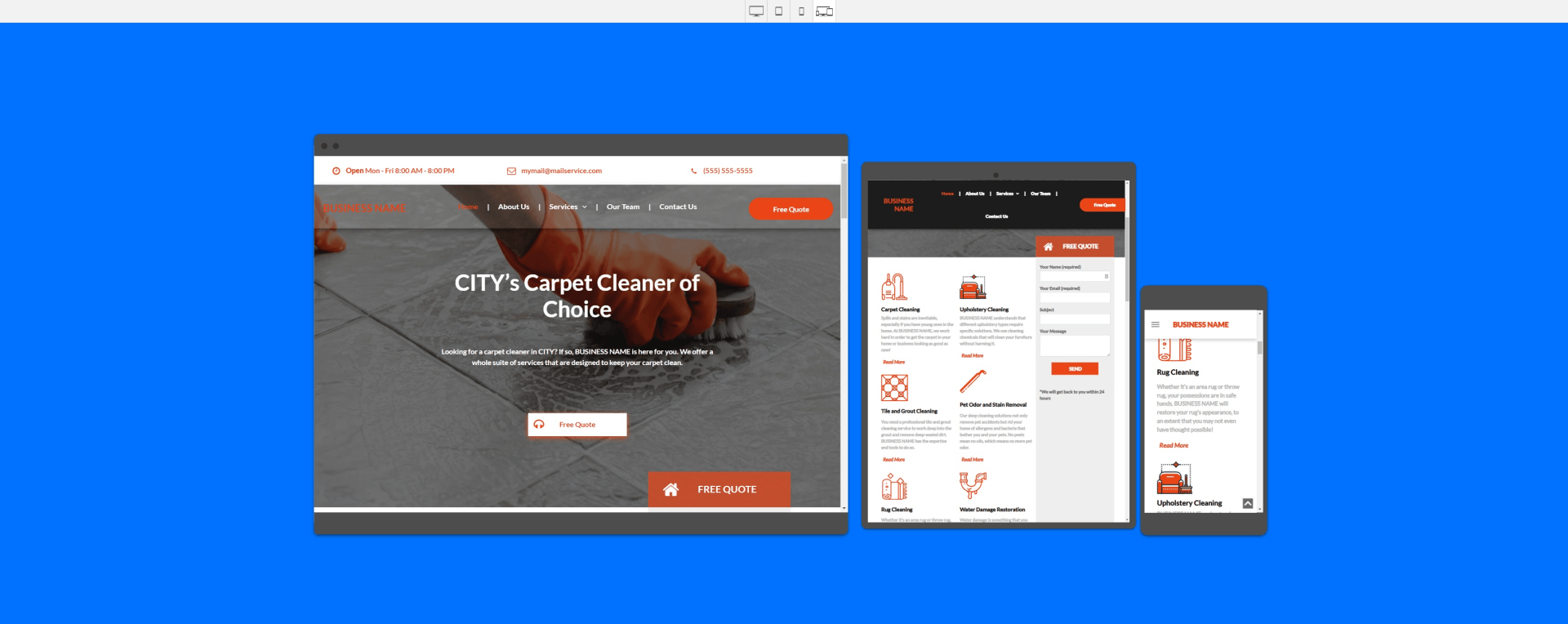Market segmentation can be visualized as a spotlight, highlighting the right audience amid the vast crowd of potential customers. This process requires dividing a market into smaller groups, known as segments. It helps to identify potential areas for market growth. It enables small businesses to create targeted marketing campaigns by dividing potential customers into distinct groups based on their specific needs, interests, and personalities.

Unlocking Customer Insights: How to Understand and Attract Your Target Market
Have you ever wondered “What is the target market of a small business?” and why some small businesses flourish while others falter? The secret sauce may lie in their understanding of the target market. Navigating the ever-evolving business landscape can be daunting, particularly for small businesses. However, identifying the right target market can be a game-changer, transforming small businesses into major market contenders. Let’s embark on a journey to unravel the mystery of target markets and their pivotal role in the success of small businesses.
Understanding the Target Market for Small Businesses
Imagine firing arrows in the dark. Sounds challenging, right? That’s exactly what marketing feels like without a defined target market. It’s like setting sail without a compass, leading to wasted resources and missed opportunities. The significance of target markets for small businesses cannot be overstated.
By focusing on a specific target market, businesses can develop effective marketing and sales strategies that boost sales, optimize marketing efficiency, and strengthen customer relationships. So, what exactly constitutes a target market? A target market comprises individuals most likely to purchase a particular product or service.
Market segmentation involves understanding and classifying potential customers into distinct market segments. Market research involves collecting data on demographics, interests, preferences, and purchasing habits of potential customers to create a profile of the ideal customer. Establishing a specific target market requires experimentation, persistence, and documentation.
By identifying the most suitable group of customers, small businesses can optimize their marketing strategy and increase their chances of success. The benefits of concentrating on a target market include increased accuracy of data and metrics, effective connection with prospective customers, and optimized marketing and sales expenditures.
Why Target Markets Matter for Small Businesses
Consider the target market as the North Star guiding small businesses through the vast universe of potential customers. Identifying a target market enables small businesses to direct their marketing efforts, customize their products/services, and achieve their marketing goals. By focusing on the same target market, businesses can ensure consistency in their messaging and branding, leading to a stronger customer base.
To gain a comprehensive comprehension of the potential customers who could purchase a product or service in order to focus marketing efforts, it is crucial to identify the small business’s target market. This helps in optimizing marketing strategies and increasing the chances of success. The process of defining a target market includes:
- Identifying the problem that your product/service resolves
- Determining the demographics of your ideal customer
- Comprehending their psychographics
- Analyzing your competition
- Evaluating your decision
- Refining your target market
By following these steps, small businesses can build a strong customer base and ensure long-term success. The aim of hyper-targeted advertising is to explore potential audiences within the intended target.
Identifying Your Small Business's Primary Target Market
In the vast sea of potential customers, identifying your small business’s primary target market is like finding the right fish to catch. The target market of a small business is a group of customers that have been identified as the most suitable recipients for its products or services. Target markets are essential for small businesses as they enable businesses to:
- Direct their marketing strategies towards the most probable purchasers of their products or services
- Tailor their messaging and advertising to resonate with their target audience
- Allocate their resources more effectively by focusing on the customers who are most likely to convert into sales
By understanding and targeting your primary market, you can increase the effectiveness of your marketing efforts and maximize your return on investment.
To identify the primary target market for a small business, it is important to analyze customer demographics, interests, and preferences. This can be achieved by examining trends and variables that are shared by segments of the target market, such as:
- geographical location
- income level
- hobbies
- interests
By understanding these factors, businesses can tailor their marketing strategies to effectively reach and engage their target audience.
However, basing the target audience on personal thoughts, feelings, and behaviors without conducting target market research can be detrimental, as it may restrict the business’s ability to connect with a segment of potential customers who share similar characteristics.
Market Segmentation Techniques for Small Businesses

Demographic segmentation, geographic segmentation, and psychographic segmentation are the three most common target markets. These segments help a business identify and assess the needs of their customers. Additionally, firmographic segmentation is a method of analyzing data about businesses to identify strengths and weaknesses in order to target the appropriate buyers in a business-to-business setting. Behavioral segmentation involves studying how consumers make their choices regarding products and services. It looks into:
- past experiences
- preferences
- brand associations
- other aspects
This helps to understand why customers buy or do not buy particular items.
Small businesses can leverage market segmentation techniques to create targeted marketing campaigns by dividing potential customers into distinct groups. For example, McDonald’s utilizes language segmentation by translating each Facebook ad campaign into Spanish.
Demographic Segmentation
Demographic segmentation is akin to a magnifying glass, bringing into focus the measurable characteristics of the target market. It involves categorizing individuals based on shared characteristics, including:
- Age
- Gender
- Income
- Education
- Occupation
This segmentation helps create distinct personas and allows companies to tailor marketing messages and products accordingly. By leveraging the demographic information about each segment, companies can effectively reach their target audience.
Firmographic segmentation involves classifying companies and businesses based on similar attributes. These attributes may include industry, number of employees and other shared characteristics.
Geographic Segmentation
Geographic segmentation is like a compass, pointing businesses towards customers based on their location. It involves analyzing differences in the locations of your target market. Geographic segmentation is beneficial as it enables personalization of the shopping experience, thereby potentially leading to increased revenue.
A geographic target market is defined as a consumer segment determined by their geographic location. For instance, a business may target consumers within a certain geographic area, such as a city or state.
Psychographic Segmentation
Psychographic segmentation is like a psychological profile, diving deep into the customers’ lifestyles, attitudes, values, and opinions. Targeting customers is a part of an effective marketing strategy. This involves taking into consideration their alignment with the brand’s values, interests, lifestyle choices and preferences.
The process entails examining customers’:
- Lifestyles
- Attitudes
- Values
- Opinions
An example of a company that utilizes psychographic segmentation is LUSH, which targets individuals who are opposed to animal testing and veganism.

Analyzing Competitors and Niche Markets
Analyzing competitors and niche markets is like studying a map before embarking on a journey. It provides valuable insights into the terrain and helps navigate the path to success.
Competitor analysis is the process of researching and evaluating major competitors to gain an understanding of:
- their products
- sales
- marketing
- advantages
- disadvantages
It allows businesses to identify their own strengths and weaknesses in comparison to each competitor and discover an opportunity in the market.
Examining competitors assists in determining the most effective strategy for interacting with the target market. Analyzing competitors and niche markets can assist small businesses in recognizing potential target markets and formulating effective marketing strategies.
Competitor Analysis
Competitor analysis is like a chess game, where understanding the opponent’s moves is crucial for success. It involves identifying and evaluating the strengths and weaknesses of competitors within a given market. This includes researching competitors’ products, pricing, marketing strategies, and target customers to gain insight into their unique advantages, strengths, and weaknesses.
Competitor analysis is advantageous in that it enables organizations to:
- Recognize market prospects and refine their offerings
- Generate customer personas through data analysis, surveys, and interviews with customers
- Gain insight into competitors’ distinguishing factors, strengths, and weaknesses
- Identify market opportunities and improve products or services
Conducting a competitor analysis can provide valuable information for organizations to make informed decisions and stay competitive in the market.
Niche Markets
Niche markets are like hidden gems in the vast marketplace, offering unique opportunities for businesses to shine. A niche market is a smaller segment of a larger target market, characterized by shared attributes that enable more specific marketing strategies. Having a thorough understanding of your niche market can enable you to create more tailored advertisements and gain insight into the particular needs and desires of potential customers in that group.
For instance, Georgetown Cupcake, a bakery specializing in cupcakes, and The Container Store, a retailer of containers, are examples of niche markets.
Conducting Target Market Research for Small Businesses
Conducting target market research for small businesses is like mining for gold, revealing valuable insights about potential customers. The journey involves multiple steps, including:
- Hiring a marketing firm
- Running randomized ad campaigns
- Conducting research
- Beginning with existing data
- Keyword research can provide insight into customer pain points that may not be openly discussed, thus aiding in the identification of target markets.
Conducting target market research may include:
- Surveying existing customers
- Analyzing marketing analytics
- Monitoring competitor activities
- Hosting focus groups
The process involves asking relevant questions. For instance, a jewelry designer may inquire whether a customer purchased a necklace for themselves or as a gift, or an app developer may ask about the average age of the app’s users.
The ultimate goal of conducting target market research is to develop strong positioning, messaging, and targeting of the target market, which is essential to the creation of successful marketing campaigns. Various strategies can be employed to solicit feedback from prospective customers, such as:
- Sending an email survey
- Creating a poll in an Instagram Story
- Asking questions in person at a farmer’s market
- Adding a pop-up to the website
- Including a stamped postcard with a shipped package.
Internal Research Methods
Internal research methods are like a treasure trove of information that can be discovered within the business itself. Analyzing customer purchase history, customer feedback, and customer demographics are examples of analyzing existing customer data.
Surveys can be conducted online, via phone, or in-person. Hosting focus groups, such as convening a group of customers to share their experiences with a product or service, and assembling a group of potential customers to discuss their needs and wants, can provide invaluable insights.
External Research Options
External research options are like exploratory expeditions, venturing outside the business to gather information from various sources. This involves gathering information from external sources, such as market surveys, customer focus groups, and competitor analysis, to gain an understanding of a business’s market position, customer preferences, and perception.
External research options can include exploring organizations, seeking external funding, and participating in research programs. Organizations including industry associations, government agencies, and research institutes can provide useful insights into the target market. External funding can be sourced from venture capitalists, angel investors, and other sources.
Research programs could include:
- Market surveys: to acquire data regarding customer preferences, buying habits, and market trends
- Customer focus groups: to supply insights into customer perceptions and opinions
- Competitor analysis: to discern strengths and weaknesses of competitors and to procure insights into the target market.

Creating Customer Personas
Creating customer personas is like painting a portrait of the ideal customer, providing a clear image of who the business is trying to reach. Customer personas are created based on data and research, and represent a particular target customer to assist businesses in understanding and targeting their ideal customers. Customer personas are vital for businesses to gain insight into their target market and craft effective marketing strategies.
Small businesses can create customer personas by undertaking market research, evaluating competitors and niche markets, and dividing their target market. By gaining an understanding of the needs, wants, and behaviors of their target customers, small businesses can develop more effective marketing strategies that are tailored to their target market.
Developing Detailed Personas
Developing detailed personas is like piecing together a puzzle, combining various elements to form a comprehensive picture of the ideal customer. Customer personas are semi-fictional characters that embody the key characteristics of a particular type of customer. These personas are constructed on the basis of data and research and are utilized to steer marketing strategies and sales funnels towards the desired target customers.
Demographic segmentation is the process of dividing a target market into distinct groups based on shared characteristics, including but not limited to age, gender, income, education level, and occupation. Geographic segmentation (e.g. Minneapolis SEO) refers to the practice of dividing a target market into distinct groups based on geographical location, including country, region, city, or neighborhood.
Psychographic segmentation is the process of dividing a target market into distinct groups based on shared values, interests, and lifestyle choices.
Using Personas to Inform Marketing Strategies
Using personas to inform marketing strategies is like using a compass to navigate, ensuring that the business is always headed in the right direction. By constructing customer personas, businesses can:
- Analyze prospect and customer data
- Gain insights into their target market
- Align sales and marketing efforts
- Engage with current customers
- Tailor their marketing campaigns to appeal to their target audience.
Data analysis, surveys, and interviews with customers can be utilized to generate customer personas. By gaining insight into the needs and preferences of their target audience, businesses can devise marketing campaigns that are tailored to their customer personas.
Adapting to Changes in Your Target Market
Adapting to changes in your target market is like steering a ship in changing seas, adjusting the course as needed to reach the desired destination. To gain insight into the needs and wants of their target market, a small business should consider demographic, geographic, and psychographic segmentation. Small businesses can leverage internal research methods, such as surveys and focus groups, or external research options, including market analysis and customer feedback, to conduct market research.
A small business can gain insight into consumer behavior by examining trends in customer purchases, preferences, and feedback. This will enable them to gain an understanding of how their target market is evolving and what strategies they should adjust accordingly.
A small business can ensure their marketing strategies remain up-to-date by keeping an eye on market trends and adapting when necessary. This will enable them to remain competitive and sustain business success.
Monitoring Market Trends
Monitoring market trends is like keeping an eye on the weather, staying informed about changes to make necessary adjustments. Market trends refer to the general direction of financial markets over a period of time, which can be influenced by various factors such as government policies, international transactions, speculation/expectation, and supply and demand. Small businesses can stay informed of industry news, study customer preferences, and observe competitor activities to monitor market trends.
Additionally, market research tools such as surveys and focus groups can provide valuable insights into customer needs and preferences. Monitoring market trends can provide small businesses with insight into changes in customer preferences and industry developments. This can enable them to make more informed decisions regarding their products and services, as well as adjust their marketing strategies to better reach their target customers.
Pivoting When Necessary
Pivoting when necessary is like changing gears in a car, adjusting to the road conditions to ensure a smooth ride. Pivoting in business refers to a strategic shift in a company’s business model, product, or target market in response to market conditions or other factors. This may involve changing some aspect of a company’s core products or services to better meet customer demand or shift their target audience to increase sales.
It is advisable for a small business to change their target market when there is an excessive amount of competition in their niche or they are not gaining sufficient customers to remain profitable. Indeed, there are several examples of small businesses that have successfully pivoted their target market.
For instance, a local coffee shop changed from selling coffee to selling baked goods, and a boutique fitness studio shifted from in-person classes to virtual classes.

Target Market Examples for Small Businesses
Target market examples for small businesses are like footprints in the sand, providing a guide for other businesses to follow. Examples of target markets for small businesses can provide valuable insight for defining and engaging potential customers.
For instance, Starbucks targets those who are willing to pay a premium for high-quality coffee and a pleasant atmosphere. In the US, McDonald’s targets a variety of distinctive audiences, such as those who recently began employment, those who are conscientious of climate change, and those who enjoy social activities.
Local Coffee Shop
A local coffee shop’s target market is like a cup of freshly brewed coffee catering to a specific taste. The target market for a local coffee shop can vary, but typically it encompasses:
- Coffee drinkers who are seeking a place to savor a cup of coffee, socialize, or work
- College students
- Professionals
- Coffee aficionados
Additionally, local marketing can focus on people within a particular radius of the coffee shop’s physical location.
Starbucks is an example of a company that utilizes targeted marketing campaigns, specifically targeting young professionals who can afford to spend $5 on a daily coffee. A local coffee shop can employ demographic segmentation techniques such as:
- Age
- Gender
- Income
- Occupation
- Education level
Geographic segmentation leverages location, climate, and population density as geographic segmentation techniques to target specific customer groups. Psychographic segmentation is the process of dividing a target market into distinct groups based on shared values, interests, and lifestyle choices.
Boutique Med Spa
A boutique med spas target market is like a tailor-made experience, designed to meet specific beauty goals and preferences. A boutique med spa typically caters to individuals who are seeking a particular type of service or a more individualized experience. Additionally, they may target those with higher incomes or those willing to pay a premium for a specialized spa experience.
The geographic area targeted by a boutique med spa is usually determined by its location. Generally, boutique med spa are situated in areas populated by individuals who prioritize health and wellness.
The target market of a med spa typically consists of individuals seeking a personalized experience along with a sense of community, belonging, and socialization.
What are the 5 most common target markets?
The five most common target markets are geographic, demographic, psychographic, behavioral and firmographic segments based on location, population, lifestyle, socio-economic status and behaviors.
These segments help businesses narrow down consumer preferences for products and services.
What is a target market example?
For example, a business may have a target market of female athletes between the ages of 13 to 25. From this larger group, a subset of customers that are most likely to buy the product could be identified as female athletes aged 13 to 16.
How do you find the target market of a business?
To find the target market of a business, you’ll need to analyze offerings and conduct market research to identify customer demographics such as age, gender, location, marital status, education level, occupation, and income.
Additionally, assess customer behavior by creating customer profiles and assessing the competition.
What is a target market?
A target market is a specific group of consumers most likely to have an interest in a business’s products or services. It helps a company focus its marketing efforts and optimize its return on investment.
By identifying a target market, businesses can tailor their marketing strategies to reach the right people. This can include creating targeted ads, developing content that resonates with the target audience, and using social media to reach the target audience.
What is market segmentation?
Market segmentation is the process of dividing a market into smaller, distinct segments for targeted marketing initiatives and to identify areas of potential growth.
This process allows businesses to better understand their target audience and tailor their marketing strategies to meet the needs of each segment. It also helps businesses identify areas of potential growth and capitalize on them.
In conclusion
Understanding the target market is a critical step towards the success of small businesses. The process involves identifying potential customers, segmenting the market, analyzing competitors and niche markets, conducting market research, creating customer personas, and adapting to changes in the market. By taking these steps, small businesses can focus their marketing efforts, tailor their products/services, and meet their marketing objectives. The journey to understanding the target market may be complex, but with the right tools and strategies, small businesses can navigate the path to success.








Unlock the Unlimited Potential of Your Business
Our professionals stop at nothing to provide excellent digital marketing solutions.
Do you want your business to be found all over online? Small Biz SEO can help. We are a marketing company that specializes in SEO for small business growth. Our team of SEO experts can help you get the most out of your website and increase your online visibility.
Our Services
All Rights Reserved | Small Biz SEO





















